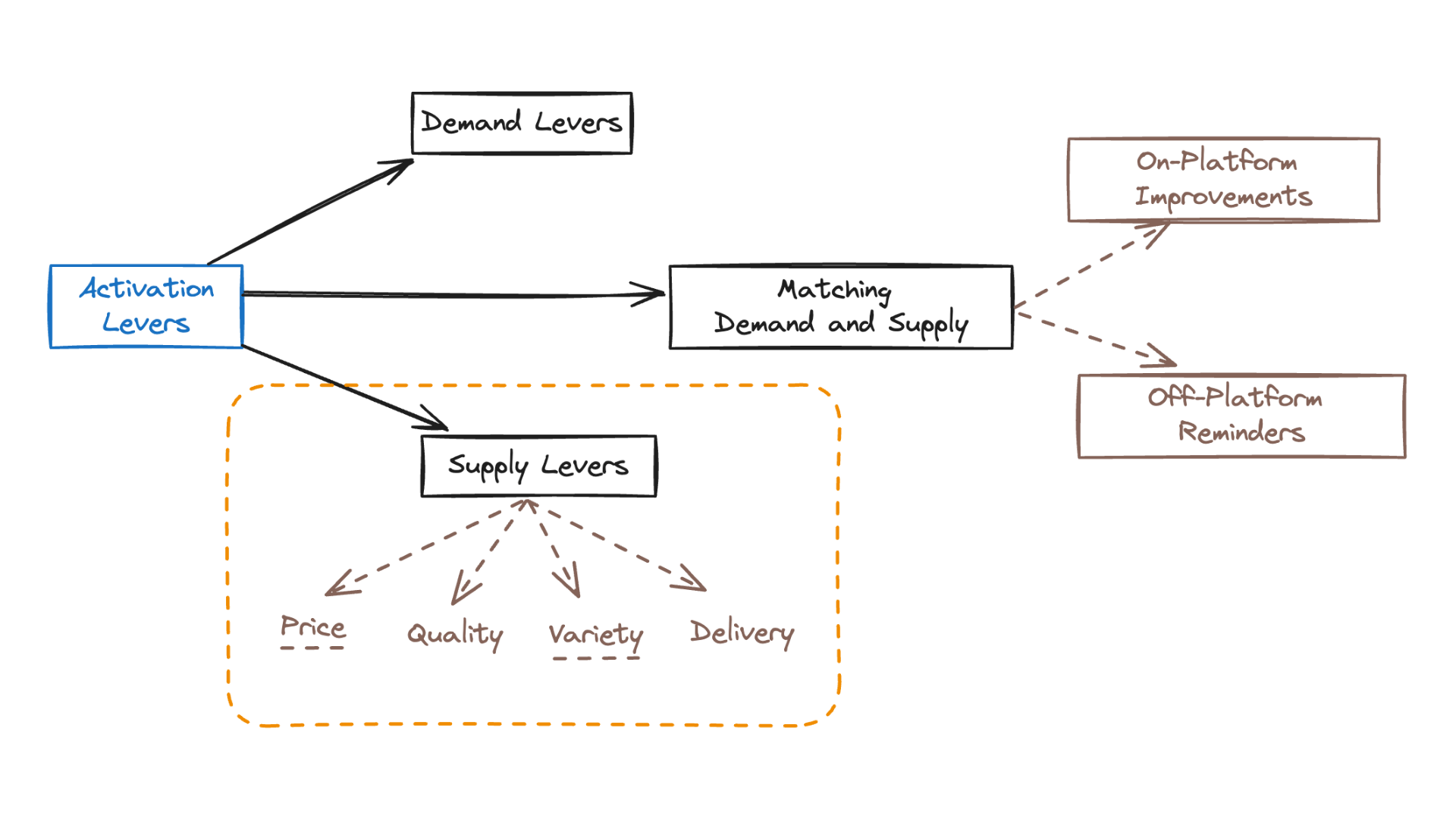How do Supply Side Levers Enhance Activation in E-commerce Marketplaces?
In e-commerce marketplaces, supply side levers play a crucial role in improving user activation rates. While similar to D2C brands in terms of overall lever buckets, the emphasis on variety and price becomes even more significant due to the competitive and diverse nature of marketplace environments.

Variety:
For marketplaces, offering a wide range of products is key to increasing the surface area of discovery for the first purchase. The ability to cater to various needs and preferences under one platform can significantly enhance user activation.
For example, a marketplace that offers everything from electronics to home goods to apparel can appeal to a broader audience, increasing the likelihood of activation.
Price:
Marketplaces often leverage their scale to offer competitive prices, which can be a major factor in user activation.
For instance, flash sales or special deals on popular items can attract and activate new users. First order discount, over and above the lowest prices that marketplaces already offer, is often a significant activation lever on marketplaces.
Other supply side levers like quality and delivery still matter but are often influenced by the individual sellers within the marketplace.
Quality is usually reflected through user reviews and ratings, which can guide new customers' purchasing decisions. Fast and reliable delivery services, whether directly from the marketplace or through trusted sellers, also contribute to higher activation rates.
However, quality and delivery are more of a threshold factor when it comes to activation, and more significant factors for retention.
Ultimately, understanding and strategically leveraging these supply side factors for their specific context, can help marketplaces optimize their user activation strategies, ensuring they attract and retain a dynamic and active user base.